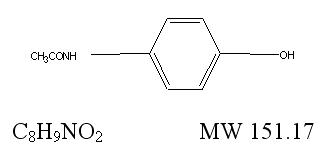Endocet Recall
Get an alert when a recall is issued.
Questions & Answers
Side Effects & Adverse Reactions
Misuse, Abuse and Diversion of Opioids
Oxycodone is an opioid agonist of the morphine-type. Such drugs are sought by drug abusers and people with addiction disorders and are subject to criminal diversion.
Oxycodone can be abused in a manner similar to other opioid agonists, legal or illicit. This should be considered when prescribing or dispensing ENDOCET tablets in situations where the physician or pharmacist is concerned about an increased risk of misuse, abuse, or diversion. Concerns about misuse, addiction, and diversion should not prevent the proper management of pain.
Healthcare professionals should contact their State Professional Licensing Board or State Controlled Substances Authority for information on how to prevent and detect abuse or diversion of this product.
Administration of ENDOCET (Oxycodone and Acetaminophen Tablets, USP) tablets should be closely monitored for the following potentially serious adverse reactions and complications:
Respiratory Depression
Respiratory depression is a hazard with the use of oxycodone, one of the active ingredients in ENDOCET tablets, as with all opioid agonists. Elderly and debilitated patients are at particular risk for respiratory depression as are non-tolerant patients given large initial doses of oxycodone or when oxycodone is given in conjunction with other agents that depress respiration. Oxycodone should be used with extreme caution in patients with acute asthma, chronic obstructive pulmonary disorder (COPD), cor pulmonale, or preexisting respiratory impairment. In such patients, even usual therapeutic doses of oxycodone may decrease respiratory drive to the point of apnea. In these patients alternative non-opioid analgesics should be considered, and opioids should be employed only under careful medical supervision at the lowest effective dose.
In case of respiratory depression, a reversal agent such as naloxone hydrochloride may be utilized (see OVERDOSAGE).
Head Injury and Increased Intracranial Pressure
The respiratory depressant effects of opioids include carbon dioxide retention and secondary elevation of cerebrospinal fluid pressure, and may be markedly exaggerated in the presence of head injury, other intracranial lesions or a pre-existing increase in intracranial pressure. Oxycodone produces effects on pupillary response and consciousness which may obscure neurologic signs of worsening in patients with head injuries.
Hypotensive Effect
Oxycodone may cause severe hypotension particularly in individuals whose ability to maintain blood pressure has been compromised by a depleted blood volume, or after concurrent administration with drugs which compromise vasomotor tone such as phenothiazines. Oxycodone, like all opioid analgesics of the morphine-type, should be administered with caution to patients in circulatory shock, since vasodilation produced by the drug may further reduce cardiac output and blood pressure. Oxycodone may produce orthostatic hypotension in ambulatory patients.
Hepatotoxicity
Precaution should be taken in patients with liver disease. Hepatotoxicity and severe hepatic failure occurred in chronic alcoholics following therapeutic doses.
Legal Issues
There is currently no legal information available for this drug.
FDA Safety Alerts
There are currently no FDA safety alerts available for this drug.
Manufacturer Warnings
There is currently no manufacturer warning information available for this drug.
FDA Labeling Changes
There are currently no FDA labeling changes available for this drug.
Uses
ENDOCET is indicated for the relief of moderate to moderately severe pain.
History
There is currently no drug history available for this drug.
Other Information
Each tablet, for oral administration, contains oxycodone hydrochloride and acetaminophen in the following strengths:
Oxycodone Hydrochloride, USP 5 mg*
Acetaminophen, USP 325 mg
*5 mg oxycodone HCl is equivalent to 4.4815 mg of oxycodone.
Oxycodone Hydrochloride, USP 7.5 mg*
Acetaminophen, USP 325 mg
*7.5 mg oxycodone HCl is equivalent to 6.7228 mg of oxycodone.
Oxycodone Hydrochloride, USP 7.5 mg*
Acetaminophen, USP 500 mg
*7.5 mg oxycodone HCl is equivalent to 6.7228 mg of oxycodone.
Oxycodone Hydrochloride, USP 10 mg*
Acetaminophen, USP 325 mg
*10 mg oxycodone HCl is equivalent to 8.9637 mg of oxycodone.
Oxycodone Hydrochloride, USP 10 mg*
Acetaminophen, USP 650 mg
*10 mg oxycodone HCl is equivalent to 8.9637 mg of oxycodone.
All strengths of ENDOCET also contain the following inactive ingredients: Colloidal silicon dioxide, croscarmellose sodium, crospovidone, microcrystalline cellulose, povidone, pregelatinized cornstarch, and stearic acid. In addition, the 7.5 mg/325 mg and the 7.5 mg/500 mg strengths contain FD and C Yellow No. 6 Aluminum Lake. The 10 mg/325 mg and the 10 mg/650 mg strengths contain D and C Yellow No. 10 Aluminum Lake.
Oxycodone, 14-hydroxydihydrocodeinone, is a semisynthetic opioid analgesic which occurs as a white, odorless, crystalline powder having a saline, bitter taste. The molecular formula for oxycodone hydrochloride is C18H21NO4•HCl and the molecular weight 351.83. It is derived from the opium alkaloid thebaine, and may be represented by the following structural formula:

Acetaminophen, 4′-hydroxyacetanilide, is a non-opiate, non-salicylate analgesic and antipyretic which occurs as a white, odorless, crystalline powder, possessing a slightly bitter taste. The molecular formula for acetaminophen is C8H9NO2 and the molecular weight is 151.17. It may be represented by the following structural formula:

Sources





![Endocet (Oxycodone And Acetaminophen) Tablet [Lake Erie Medical & Surgical Supply Dba Quality Care Produtcs Llc]](http://dailymed.nlm.nih.gov/dailymed/image.cfm?setid=0ad893bd-5e2e-4ea4-b11c-80ed34a85b35&name=Endocet7.5mg500mgEndo.jpg)
![Endocet (Oxycodone And Acetaminophen) Tablet [Lake Erie Medical Dba Quality Care Products Llc]](http://dailymed.nlm.nih.gov/dailymed/image.cfm?setid=a33e88ea-3761-4b1e-bcb3-0a2ddf6794c6&name=Endocet10mg325mgENDO.jpg)
![Endocet (Oxycodone And Acetaminophen) Tablet [Qualitest Pharmaceuticals]](http://dailymed.nlm.nih.gov/dailymed/image.cfm?setid=944d3e60-7eee-11de-a413-0002a5d5c51b&name=endocet-oxycodone-and-acetaminophen-tablets-usp-3.jpg)